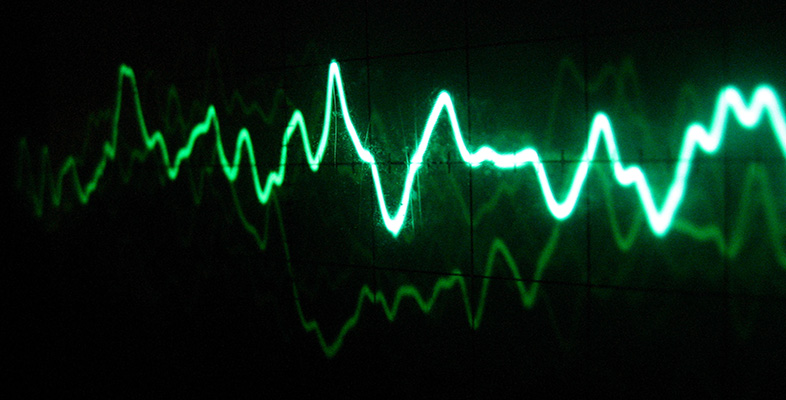2.7 Summary
Pressure in the air is related to how closely packed the molecules are. Other things being equal, more closely packed molecules are at a higher pressure than more dispersed molecules. Sound is associated with fluctuations of the air pressure caused by local disturbance. Fluctuations of pressure travel outwards away from the disturbance, carrying energy imparted by the disturbance.
A simple form of local disturbance to air pressure is a vibrating tuning fork. It generates a pressure wave, consisting of alternating regions of high and low pressure which travel away from the fork. (The molecules in the air oscillate longitudinally, but do not themselves travel away from the source.) Because the pressure wave radiates away from the source, it is known as a travelling wave.
One cycle of oscillation of the tuning fork has a characteristic time (depending on how quickly the prongs oscillate) known as the period of oscillation, symbol T or τ. In a single cycle of the fork's oscillation, one complete high-pressure region and one complete low-pressure region in the pressure wave are produced.
For a pressure wave produced by a tuning fork, a graph of pressure plotted against distance is a sine wave. Sounds with a sinusoidal pressure wave are considered to be pure, neutral or flute-like. A sinusoidal pressure wave has a characteristic distance, known as the wavelength (symbol λ), between adjacent regions of high pressure (or low pressure) in consecutive cycles. The size of the wavelength is determined by the period of oscillation of the source: a quickly vibrating source produces a shorter wavelength than a more slowly vibrating source. The wavelength is also the distance the pressure wave travels in the time it takes the source to complete one cycle.
If we monitor the pressure at a fixed point in the vicinity of a sinusoidally oscillating source and plot the results as a graph of pressure against time, the result is again a sine wave. The period of the pressure variations is the same as that of the source.
